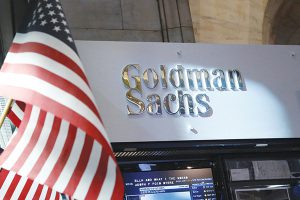Soaring pay and bonuses came as an unwelcome shock to shareholders during US banks’ 2021 earnings season. Most big European banks are also likely to complain about the exploding cost of talent in their results over the next few weeks.
The big worry for investors — after the best banking profits in years — is that pay profligacy today will bake in higher costs that are harder to shed when trading and dealmaking inevitably slow. There are already signs that the market for new listings is sputtering to a standstill.
But headline pay gains mask a subtler picture beneath. The past decade has seen creeping changes in the kinds of jobs bankers do and the way many of them are paid. Even at Goldman Sachs Group Inc., the vast majority of its 45,000 staff are now compensated more like everyone else than like bonus-chasing investment bankers, according to Chairman and Chief Executive
Officer David Solomon.
That has helped cut the cost of pay as a proportion of revenue – the compensation ratio – from an average of nearly 40% in 2011 to 36.5% last year for the big five US banks plus Deutsche Bank AG, which reported full-year results. Most of that decline is accounted for by Morgan Stanley and Goldman Sachs.
Some of that change is due to the big recovery in revenue over past couple of years. But until 2021, the average cost per employee at some of the biggest US banks had stagnated for several years. In Goldman Sachs’s case it had been falling. But amid high competition for the most in-demand staff on Wall Street, banks are employing tactics designed keep the costs of these
people flexible in future.
During previous booms, executives seduced their targets with guaranteed bonuses, sometimes for several years. That hasn’t been happening this time, according to headhunters and bankers. Instead, banks have focused resources on retention rather than recruitment, bidding people to stay with promotions and promises of rapid careers development, sweetened of course with extra money.
Some banks are also trying to guard against broad inflation among the highest paid by characterising some payouts in 2021 as windfalls from a very fruitful year rather than as bonuses that should influence what they expect next time. Goldman is doing this with special share-based bonuses for its partners – highest ranking 1% of staff in the company.
Broader inflation is lifting salaries for the greater number of lower-paid people, for example in retail branch networks. Some of JPMorgan Chase & Co.’s lowest-paid people got “merit increases†to salaries last year that cost the bank $1 billion, or 2.6% of its total pay bill. But these also sound more like special deals than repeatable raises.
Across the industry, extra benefits and big salary boosts for junior investment bankers and traders have been well documented, but there is some element of catch-up. No doubt younger bankers are paid very well compared with most other industries, but their older peers say compensation hasn’t changed much in dollar terms since before global financial crisis in 2008.
If 2022 turns out to be another boom year for bankers, it will be harder for executives to resist the worst pay practices that bake in less flexible longer-term costs. But, on balance, investors ought to take some comfort that for now banks seem to be guarding against excessive inflation.
—Bloomberg
 The Gulf Time Newspaper One of the finest business newspapers in the UAE brought to you by our professional writers and editors.
The Gulf Time Newspaper One of the finest business newspapers in the UAE brought to you by our professional writers and editors.
